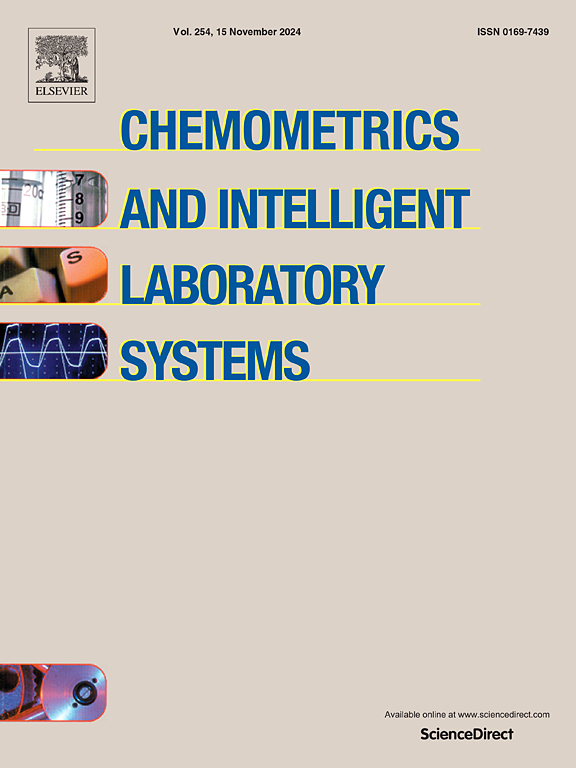Multiclass classification of leukemia cancer subtypes using gene expression data and Optimized Dueling Double Deep Q-network
IF 3.7
2区 化学
Q2 AUTOMATION & CONTROL SYSTEMS
Chemometrics and Intelligent Laboratory Systems
Pub Date : 2025-04-10
DOI:10.1016/j.chemolab.2025.105402
引用次数: 0
Abstract
Microarray technology aids in gene expression tracking, but diagnosing complex conditions like leukemia remains challenging due to multiple clinical factors. Deep reinforcement learning for cancer classification faces challenges related to optimization, handling high-dimensional noisy data, and interpretability. To address these limitations, this study proposes an Optimized Dueling Double Deep Q-Network (DDDQ-N) Framework, integrating advanced feature selection and DRL for robust leukemia subtype prediction. The framework begins with pre-processing, which includes data cleaning, normalization, and addressing class imbalance using the Synthetic Minority Over-sampling Technique (SMOTE). To enhance interpretability and reduce dimensionality, a novel Butterfly Optimization with Chaotic Local Search (BO-CLS) algorithm is introduced for feature selection, efficiently identifying the most discriminative genes. The selected features are then processed by a Dueling Double Deep Q-Network (DDQ-N), combining deep representation learning with reinforcement learning for sequential decision-making. The model employs a custom reward function and episode-based training to handle multi-class imbalance, adapt to tumor heterogeneity, and optimize classification strategies. Experimental results on a multi-class leukemia gene expression dataset demonstrate the model's superiority, achieving 99 % accuracy, 98.8 % precision, 99.2 % recall, and 99 % F1-score, outperforming existing methods such as Machine Learning (ML) Ensemble (94 %), Stacked Autoencoders with Grey Wolf Optimization (SAE-GWO) (98 %), and Feature Selective Neuro Evolution of Augmenting Topologies (FS-NEAT) (93 %). The proposed BO-CLS feature selection also shows significant improvements over ChisIG-SMOTE (95.5 % accuracy) and east Absolute Shrinkage and Selection Operator-Multi-Objective Genetic Algorithm (LASSO-MOGAT) (94.7 % accuracy), confirming its effectiveness in dimensionality reduction. These findings highlight the potential of the proposed framework to revolutionize leukemia diagnosis and provide a more efficient, interpretable, and accurate approach for clinical applications.
基于基因表达数据和优化Dueling Double Deep Q-network的白血病亚型多类分类
微阵列技术有助于基因表达跟踪,但由于多种临床因素,诊断像白血病这样的复杂疾病仍然具有挑战性。用于癌症分类的深度强化学习面临着与优化、处理高维噪声数据和可解释性相关的挑战。为了解决这些限制,本研究提出了一个优化的Dueling Double Deep Q-Network (DDDQ-N)框架,将高级特征选择和DRL集成在一起,用于稳健的白血病亚型预测。该框架从预处理开始,包括数据清理、规范化和使用合成少数派过采样技术(SMOTE)处理类不平衡。为了提高可解释性和降低维数,引入了一种新的混沌局部搜索蝴蝶优化算法(BO-CLS)进行特征选择,有效地识别出最具区别性的基因。选择的特征然后由Dueling Double Deep Q-Network (DDQ-N)进行处理,将深度表示学习与强化学习相结合以进行顺序决策。该模型采用自定义奖励函数和基于事件的训练来处理多类不平衡,适应肿瘤异质性,优化分类策略。在多类白血病基因表达数据集上的实验结果证明了该模型的优越性,达到99%的准确率,98.8%的精度,99.2%的召回率和99%的f1得分,优于现有的方法,如机器学习(ML)集成(94%),灰狼优化堆叠自编码器(SAE-GWO)(98%)和增强拓扑特征选择神经进化(FS-NEAT)(93%)。所提出的BO-CLS特征选择也比chiseg - smote(准确率为95.5%)和east绝对收缩和选择算子-多目标遗传算法(LASSO-MOGAT)(准确率为94.7%)有显著改善,证实了其降维效果。这些发现突出了所提出的框架在白血病诊断方面的潜力,并为临床应用提供了更有效、可解释和准确的方法。
本文章由计算机程序翻译,如有差异,请以英文原文为准。
求助全文
约1分钟内获得全文
求助全文
来源期刊
CiteScore
7.50
自引率
7.70%
发文量
169
审稿时长
3.4 months
期刊介绍:
Chemometrics and Intelligent Laboratory Systems publishes original research papers, short communications, reviews, tutorials and Original Software Publications reporting on development of novel statistical, mathematical, or computer techniques in Chemistry and related disciplines.
Chemometrics is the chemical discipline that uses mathematical and statistical methods to design or select optimal procedures and experiments, and to provide maximum chemical information by analysing chemical data.
The journal deals with the following topics:
1) Development of new statistical, mathematical and chemometrical methods for Chemistry and related fields (Environmental Chemistry, Biochemistry, Toxicology, System Biology, -Omics, etc.)
2) Novel applications of chemometrics to all branches of Chemistry and related fields (typical domains of interest are: process data analysis, experimental design, data mining, signal processing, supervised modelling, decision making, robust statistics, mixture analysis, multivariate calibration etc.) Routine applications of established chemometrical techniques will not be considered.
3) Development of new software that provides novel tools or truly advances the use of chemometrical methods.
4) Well characterized data sets to test performance for the new methods and software.
The journal complies with International Committee of Medical Journal Editors'' Uniform requirements for manuscripts.

 求助内容:
求助内容: 应助结果提醒方式:
应助结果提醒方式:


